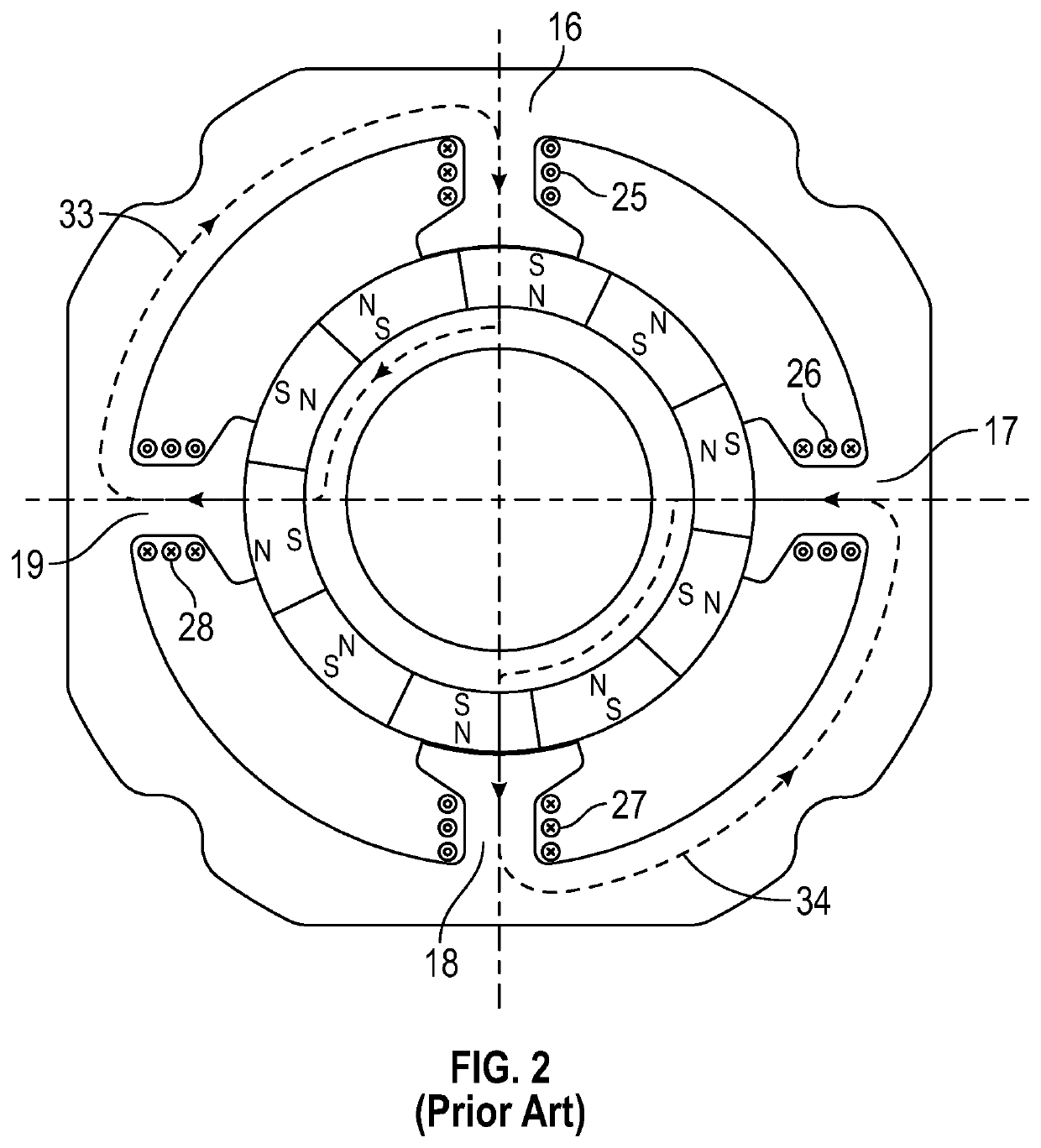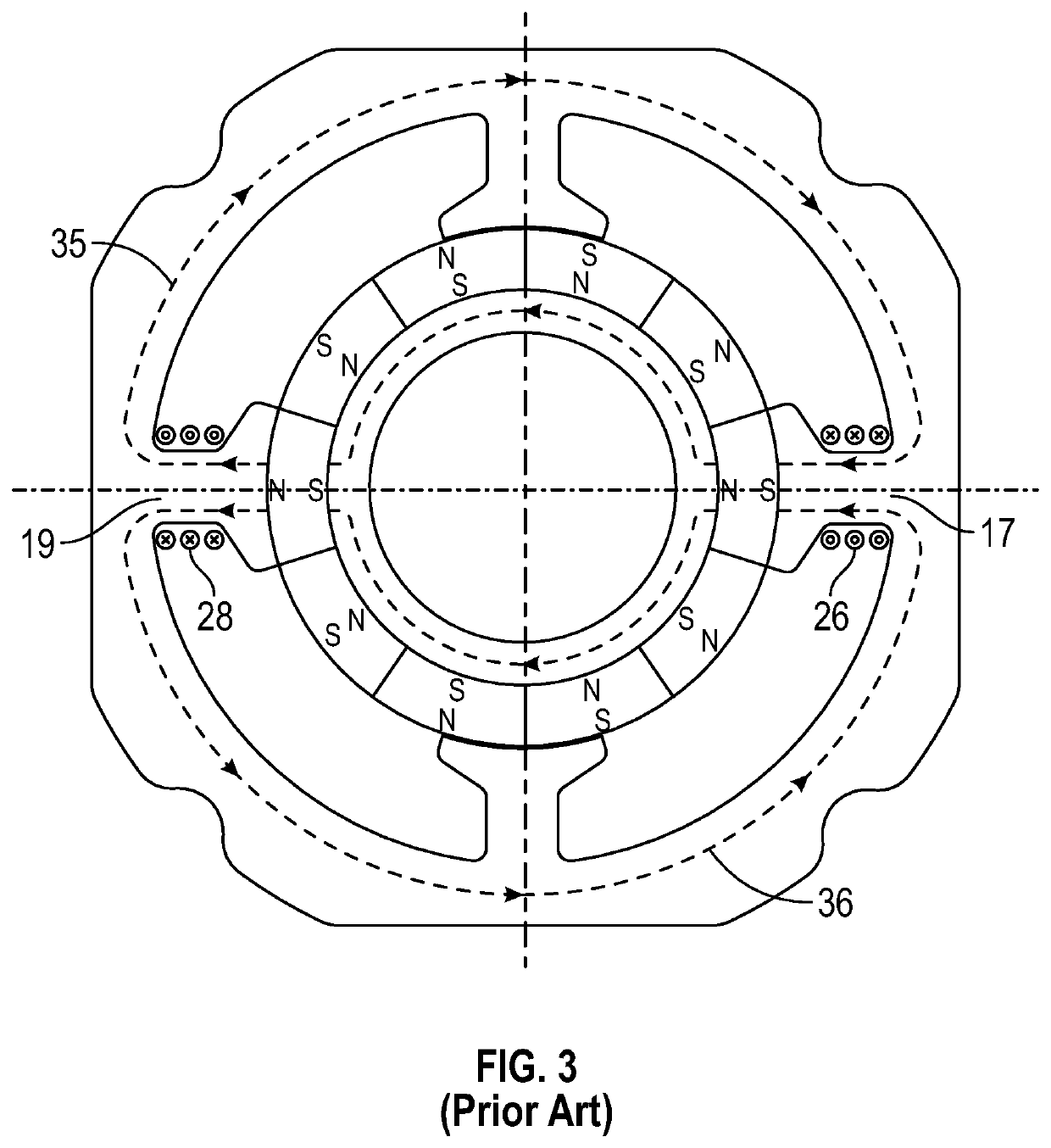4-stator-pole step motor with passive inter-poles
a step motor and passive technology, applied in the direction of electrical equipment, dynamo-electric machines, etc., can solve the problems of lack of pole shoes, lack of conductive windings of dummy interpoles, etc., to improve motor efficiency, minimize flux leakage, and develop maximum torque
- Summary
- Abstract
- Description
- Claims
- Application Information
AI Technical Summary
Benefits of technology
Problems solved by technology
Method used
Image
Examples
Embodiment Construction
[0017]With reference to FIGS. 4-6, an 18° hybrid-PM mix step motor, representative of the invention, is seen in respective A-phase ON, AB-phase ON and B-phase ON conditions, which are three of the eight full-step and half-step drive phases of the motor. The other drive phases are comparable but with one or both drive current directions reversed, as is well known in the art. The one phase ON conditions (A+, B+, A−, and B−) are the full step positions separated by 18° rotations of the rotor. The various two phase ON conditions (A+B+, A−B+, A−B−, and A+B−) are offset by a half-step rotation of 9° from the full step positions. A micro-stepping mode of operation is also possible, where the A and B stator pole windings receive various amounts of drive current less than the full amplitude, so that the rotor is in positions between the full-step and half-step positions.
[0018]All the hybrid-PM mix steppers (both the one illustrated in FIGS. 4-6 and another shown in FIGS. 10-12), may have the...
PUM
 Login to View More
Login to View More Abstract
Description
Claims
Application Information
 Login to View More
Login to View More - R&D
- Intellectual Property
- Life Sciences
- Materials
- Tech Scout
- Unparalleled Data Quality
- Higher Quality Content
- 60% Fewer Hallucinations
Browse by: Latest US Patents, China's latest patents, Technical Efficacy Thesaurus, Application Domain, Technology Topic, Popular Technical Reports.
© 2025 PatSnap. All rights reserved.Legal|Privacy policy|Modern Slavery Act Transparency Statement|Sitemap|About US| Contact US: help@patsnap.com



